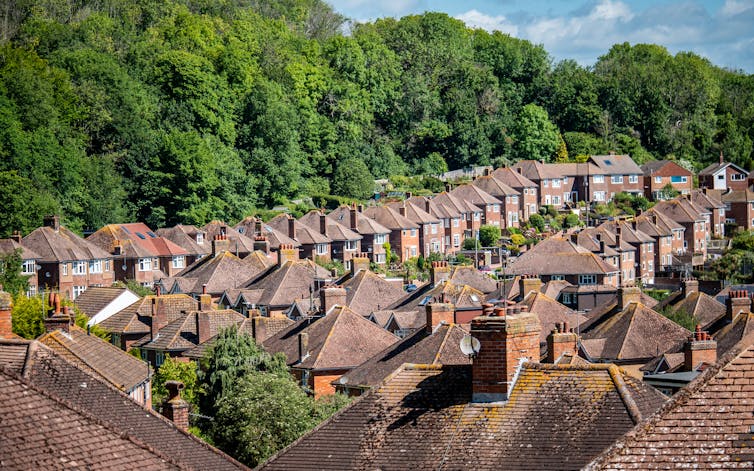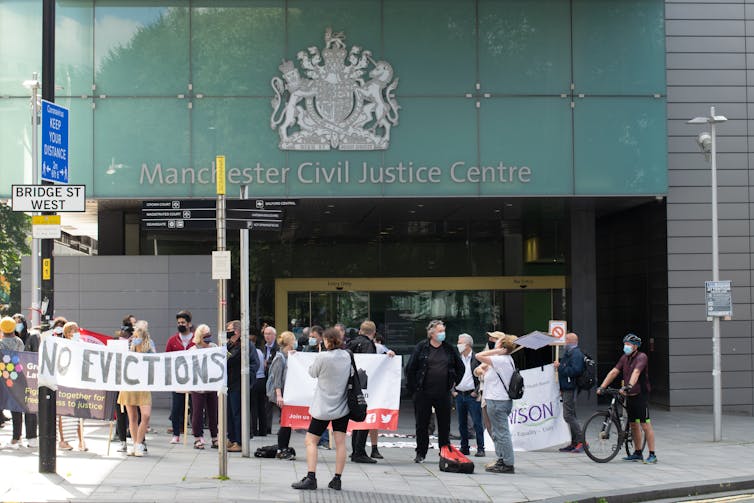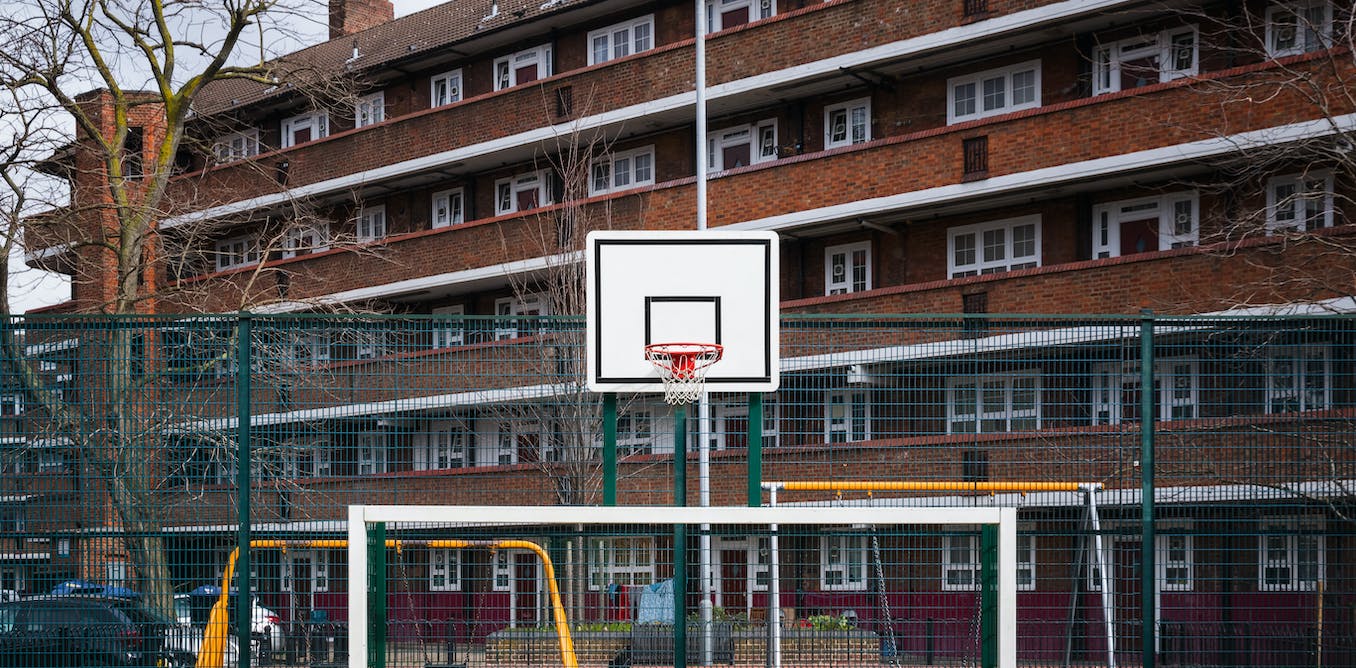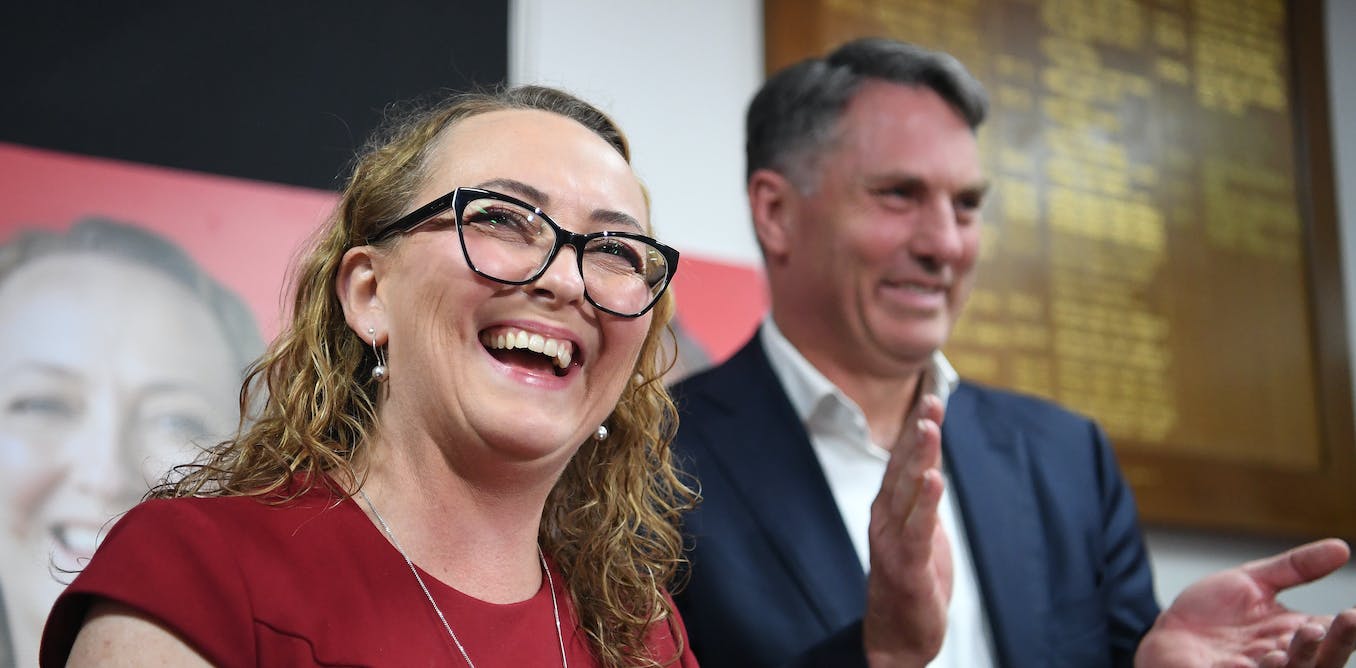In her ruling on the death of two-year old Awaab Ishak in Rochdale in 2020, senior coroner Joanne Kearsley concluded that the child had died as a result of “prolonged exposure to mould in his home environment”.
According to the English Housing Survey, in 2020, 116,000 other social renting households in England faced condensation and mould bad enough to count as a “serious” hazard to health, as defined by the official housing health and safety rating system(HHSRS). The survey also found 137,000 homeowners and 191,000 private tenants – for a total of 1.8% of all households in England – are impacted by serious damp and mould.
In total, the survey found that 2.5 million homes in England had serious hazards in 2020. If this sounds awful, nonetheless it marks a huge improvement on the 4.8 million found in 2010. Going by figures from the Building Research Establishment (BRE), this progress probably saved the NHS about £20 billion over the decade.
However, widespread housing health problems persist because the risks of unsafe housing are overlooked, responsibility is dispersed and funds are tight. Progress on reducing HHSRS hazards at home slowed over the late 2010s as budget cuts made due to the government’s austerity programme began to hit. With the added impact of the pandemic, progress may now have even started to reverse.

pxl.store | Shutterstock
One in ten at risk
In 2020, 9.4% of all households in England lived with some kind of serious health and safety risk. These include risks of fire, electrical faults and building collapse to excessive cold, heat or noise, infections, poisoning, falls, overcrowding, and entry by intruders.
Of all private renters, 13.2% had a serious hazard at home, followed by 10.2% of owners and 5.3% of social renters. Further, 14.2% of black households and 12.5% of low-income households were at risk.
A landmark report by the BRE in 2011 showed that the effects of serious dampness alone were costing the NHS an estimated £20 million a year (at 2021 prices). Seriously hazardous and poor housing overall was more expensive for the NHS than physical inactivity – and as bad as smoking, drinking and obesity.
In addition to the savings already made over the last decade, according to the BRE the NHS could save a further £1.8 billion a year (at 2021 prices), if all outstanding serious housing health hazards in England were been removed. This means the improvements would effectively pay for themselves by 2030.
Systematic underinvestment
Part of the problem is who pays for housing improvements. From 1919 to 1951, it was the UK’s Ministry of Health that was responsible for government action on housing. As historian Alan Holmans showed in his 1987 book, Housing Policy in Britain, the ministry and local councils both spent vast sums to demolish slum homes and build hundreds of thousands of new ones.
Today, however, the up-front costs of regulation and improvement of housing conditions fall on central government, local authorities, landlords and homeowners. None of these get the financial savings of improvements to health, which, instead, accrue gradually over years to the NHS, and often go unrecognised. All these groups are therefore tempted to delay or cut investment, and end up systematically underinvesting.

John B Hewitt | Shutterstock
There have been numerous attempts to combat this problem. For example, multiple UK health, social care and housing organisations have agreed a formal plan to improve health through the housing. Clinical commissioning groups have enabled doctors to prescribe new boilers.
However, experiments, reforms and improvements rely on investments of time and money, and are less likely to take place when public bodies are hit by austerity measures, or the kind of financial pressures brought on by the pandemic.
In 2020/21, the Department for Levelling Up, Housing and Communities budgeted only only 52%, in real terms, of what it had allocated in 2009/10 for communities activities, including support for new housing. Its budget for local government, including preventing homelessness, was only 67% of what it had been.
In 2012, the regulatory body for social housing in England (then the Homes and Communities Agency) ceased most proactive monitoring of fire safety, repairs, housing quality, neighbourhood quality, tenancies and tenant involvement. The current social housing regulator, meanwhile, can only respond to individual complaints raised by tenants.
Further, the local authority budgets for monitoring and enforcement have been drastically reduced. Repairs backlogs have built up in all tenures during the pandemic.
In her ruling, the Rochdale coroner said that HHSRS standards are “outdated”, and that the most recent evidence does show even more danger from damp.
Research also reveals harms from housing insecurity, poor neighbourhood quality and unaffordability, which are not taken into account in current housing standards. For example, the financial stress resulting from the 2016 cuts in the local maximum housing benefit for private tenants has been shown to have caused an estimated 26,000 extra cases of mental ill-health in Great Britain.
Plans to reform social housing regulation, in train since 2017, are going through parliament. Protection of private renters in England from no-fault evictions, which was promised in the 2019 manifesto, may yet come to fruition.
However, with current rates of inflation and the cost of living crisis, neither private households, landlords or central government are likely to make enough of the money needed to actually transform housing safety.




